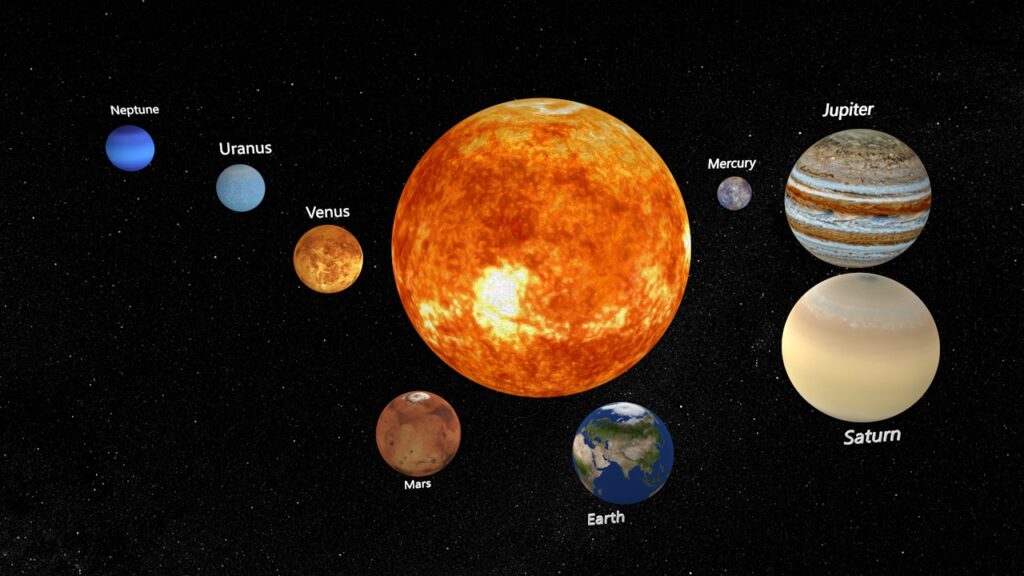
The Basic Overview of the Solar System
Formation and Age: It was approximately formed about 5 billion years ago and is a stellar system within the Milky Way Galaxy.
Size and Scope: With a diameter of about 15 trillion kilometers, the mass is mainly concentrated within a range of 4.5 billion kilometers, that is, within the range where the Sun and the planets move.
Central Celestial Body: The Sun is located at the center of the solar system. It is a blazing star, and its mass accounts for about 99.86% of the total mass of the solar system.
Position in the Milky Way Galaxy: The solar system is about 25,000 to 28,000 light-years away from the center of the Milky Way Galaxy. It is situated on the Orion Arm and revolves around the center of the Milky Way Galaxy, with an orbital period of about 225 to 250 million years.
Main Members of the Solar System
Planets: There are a total of 8 planets. Arranged in order from the closest to the farthest from the Sun, they are Mercury, Venus, Earth, Mars, Jupiter, Saturn, Uranus, and Neptune. Among them, Mercury, Venus, Earth, and Mars are terrestrial planets; Jupiter, Saturn, Uranus, and Neptune are Jovian planets.
Astronomy: The Eight Planets of the Solar System
Satellites: There are at least 165 known satellites. For example, the Earth’s satellite is the Moon, and Jupiter and Saturn have numerous satellites, such as Io, Europa, and Titan.
Dwarf Planets: They include Ceres, Pluto, Eris, Makemake, Haumea, etc., which are located in the asteroid belt or the trans-Neptunian region.
Asteroids: They are mainly distributed in the asteroid belt between the orbits of Mars and Jupiter, consisting of millions of asteroids of varying sizes.
Comets: Such as Halley’s Comet, which is composed of substances like ice, dust, and rocks. Its orbit is usually highly elliptical, and it approaches the Sun periodically.
Interstellar Matter: It includes interstellar dust, gas, etc., which pervades the space of the solar system.
Structural Regions of the Solar System
Inner Solar System: It includes the terrestrial planets Mercury, Venus, Earth, Mars, their satellites, and the asteroid belt.
Middle Solar System: It includes the four Jovian planets Jupiter, Saturn, Uranus, Neptune, their satellites, and short-period comets.
Outer Solar System: Also known as the trans-Neptunian region, it contains the Kuiper Belt and the Oort Cloud, where there are mostly small celestial bodies in the solar system. The Kuiper Belt is a ring-shaped region located beyond the orbit of Neptune, at a distance of 30 to 50 astronomical units from the Sun, mainly composed of a mixture of rocks and various ices. The Oort Cloud is a hypothetical spherical cloud-like cluster of celestial bodies surrounding the solar system. The closest part is 2,000 to 5,000 astronomical units away from the Sun, and the farthest part is at 50,000 astronomical units. It is considered the main source of long-period comets.
Leave a Reply